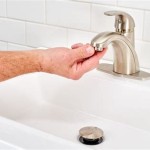How To Tile A Narrow Bathroom
Tiling a narrow bathroom presents unique challenges compared to larger spaces. Careful planning and execution are crucial for a successful outcome. This article outlines the process of tiling a narrow bathroom, providing guidance on material selection, layout, and installation techniques.
1. Planning and Preparation
Accurate measurements are paramount in a narrow bathroom. Measure the length and width of each wall and the floor area. Factor in the size of the tiles and the width of the grout lines when calculating the number of tiles required. Add 10-15% extra to account for cuts and breakages. Sketch a layout plan, paying attention to tile placement around fixtures and windows. This pre-planning helps visualize the finished look and minimizes waste.
Before starting the tiling process, the bathroom must be thoroughly cleaned and prepared. Remove any existing wall coverings, such as wallpaper or old tiles. Repair any damaged drywall or plaster and ensure the surfaces are smooth and even. Apply a waterproof membrane to the walls and floor, especially in the shower or bath area, to protect against moisture damage.
2. Choosing the Right Tiles
Tile selection significantly impacts the perception of space in a narrow bathroom. Larger format tiles can make the room feel more spacious by minimizing grout lines. Light-colored tiles reflect light, creating an illusion of openness. Consider using rectangular tiles and laying them horizontally to visually widen the room. Glass or glossy tiles further enhance the sense of spaciousness.
The material of the tile is also an important consideration. Ceramic and porcelain tiles are durable and water-resistant, making them suitable for bathroom floors and walls. Natural stone tiles, such as marble or slate, offer a luxurious aesthetic but require sealing to prevent water damage. Mosaic tiles can add decorative accents or create a feature wall.
3. Optimizing the Layout
Careful tile layout can maximize the visual impact in a narrow bathroom. Start tiling from the center of the wall or floor and work outwards. This symmetrical approach ensures a balanced look and minimizes the visibility of cut tiles. Consider using a staggered or brick pattern to add visual interest and break up the linearity of the space.
In a narrow shower enclosure, vertical tile lines can draw the eye upwards, creating an illusion of height. Alternatively, horizontal lines can widen the perceived space. Experiment with different layouts on paper before committing to the final design.
4. Cutting and Installing Tiles
Precise tile cutting is essential for a professional finish. Use a tile cutter or wet saw to make straight cuts. For curved cuts around pipes or fixtures, use a tile nipper or a diamond hole saw. Wear safety glasses and gloves when cutting tiles to protect against dust and sharp edges.
Apply a thin, even layer of tile adhesive to the wall or floor using a notched trowel. Place the tiles firmly onto the adhesive, ensuring they are level and evenly spaced. Use tile spacers to maintain consistent grout lines. Periodically check the tile alignment with a level to avoid any sloping or unevenness.
5. Grouting and Sealing
After the adhesive has cured (typically 24-48 hours), remove the tile spacers and apply grout to the joints. Use a rubber float to work the grout into the gaps, ensuring they are completely filled. Remove excess grout with a damp sponge and allow it to dry according to the manufacturer's instructions.
Sealing the grout protects it from moisture and stains. Apply a grout sealer with a small brush, ensuring all grout lines are covered. Allow the sealer to dry completely before using the bathroom. For natural stone tiles, apply a sealant to the tile surface as well to prevent staining and water damage.
6. Finishing Touches
Once the tiles are set, grouted, and sealed, install any necessary trim pieces, such as baseboards or corner moldings. These finishing touches enhance the overall aesthetic and provide a polished look. Clean the tiles one final time to remove any remaining dust or debris.
Proper installation and careful planning can transform even the narrowest bathroom into a stylish and functional space. By following these guidelines, one can achieve a professional-looking tile installation that enhances the beauty and value of the home.
Tiling A Small Bathroom Dos And Don Ts Bob Vila
Big Tile Or Little How To Design For Small Bathrooms And Living Spaces S Of America
Big Tile Or Little How To Design For Small Bathrooms And Living Spaces S Of America
Big Tile Or Little How To Design For Small Bathrooms And Living Spaces S Of America
The Best Of Bathroom Tile Ideas For Small Bathrooms Westside
7 Tile Ideas To Make A Small Bathroom Feel Bigger Houzz Ie
Big Tile Or Little How To Design For Small Bathrooms And Living Spaces S Of America
Choosing Tiles For A Small Bathroom Tile Wizards
Bathroom Tile Ideas For Small Bathrooms Arizona
Small Bathroom Tile Ideas To Transform A Cramped Space
Related Posts







